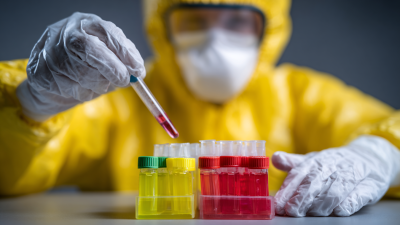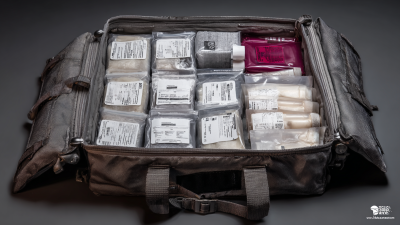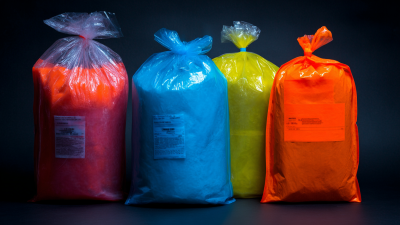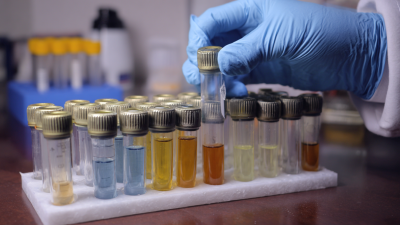 +86 178 5514 5298
+86 178 5514 5298
Leave Your Message
-
 CONTACT NUMBER
CONTACT NUMBER -
 CONTACT NUMBER
CONTACT NUMBER -
 CONTACT NUMBER
CONTACT NUMBER



In modern laboratories, the importance of safety and compliance cannot be overstated, especially when dealing with potentially hazardous biological materials. Biohazard specimen bags play a crucial role in this context, serving as the first line of defense against contamination and exposure. According to a report by the Occupational Safety and Health Administration (OSHA), improper handling of biohazardous materials can lead to severe health risks, not only for laboratory personnel but also for the wider community. Furthermore, the global biohazard waste management market is projected to reach USD 12.92 billion by 2028, emphasizing the growing recognition of the need for effective containment solutions. However, with a myriad of options available, choosing the right biohazard specimen bags can be daunting. To aid laboratories in making informed decisions, this article presents seven essential tips for selecting the optimal bags that will enhance safety while ensuring compliance with industry standards.

In laboratory settings, biohazard specimen bags play a crucial role in ensuring the safety and integrity of hazardous materials. Understanding their importance is essential, especially when dealing with sensitive specimens such as those generated in testing for infectious diseases like MERS. Selecting the right bags can significantly impact the quality of samples and the overall safety protocols in place.
One vital tip when choosing biohazard specimen bags is to consider the material. Opt for bags made from durable, puncture-resistant materials that can withstand potential spills and leaks. Additionally, look for bags that provide clear labeling for easy identification of hazardous contents, which is crucial for safe handling and disposal.
Another critical consideration is the size of the bags. Ensure that the bags are appropriately sized for the specimens being collected, as this helps prevent contamination and makes transportation easier. It's also beneficial to choose bags with secure closures that can prevent any accidental opening during transit, safeguarding the specimens and laboratory personnel alike. By taking these factors into account, laboratories can enhance their safety measures and improve the reliability of their testing processes.
| Tip | Description | Material | Size | Color |
|---|---|---|---|---|
| 1. Identify the Type of Specimens | Choose bags that suit specific specimen types (blood, tissue, etc.). | Polyethylene | Various Sizes | Red |
| 2. Ensure the Bags are Leak-Proof | Select leak-proof bags to prevent contamination. | Polypropylene | Medium | Yellow |
| 3. Review the Thickness of the Bags | Thicker bags offer better protection against punctures. | Nylon | Large | Orange |
| 4. Check for Biohazard Symbols | Ensure bags are marked with international biohazard symbols. | Vinyl | Small | Black |
| 5. Verify Storage Conditions | Select materials that withstand storage temperature variations. | PE & PP | Assorted | Green |
| 6. Assess the Closure Mechanism | Choose bags with secure closure to prevent spills. | Plastic | Varied | Blue |
| 7. Check Regulatory Compliance | Ensure the bags comply with local and international standards. | New Materials | Custom Sizes | Clear |
When selecting biohazard specimen bags for your laboratory, it's crucial to focus on key features that ensure safety and compliance. First and foremost, the bags should be made from durable, puncture-resistant materials. This is essential to prevent leaks and spills, protecting both personnel and the environment from potential biological hazards. Additionally, bags with strong seals, such as heat-sealed or double-zipped closures, provide an extra layer of security against contamination.
Another important feature to consider is clear labeling compliance. Specimen bags should be pre-printed with biohazard symbols and necessary information fields, ensuring that all samples are easily identifiable and handled correctly. Opting for bags that are color-coded can further enhance organization and safety protocols within the lab. Lastly, consider the size and capacity of the bags to accommodate a range of specimen types while maximizing space efficiency in your laboratory storage. By prioritizing these key features, you can ensure the safe and effective handling of biohazardous materials in your laboratory environment.
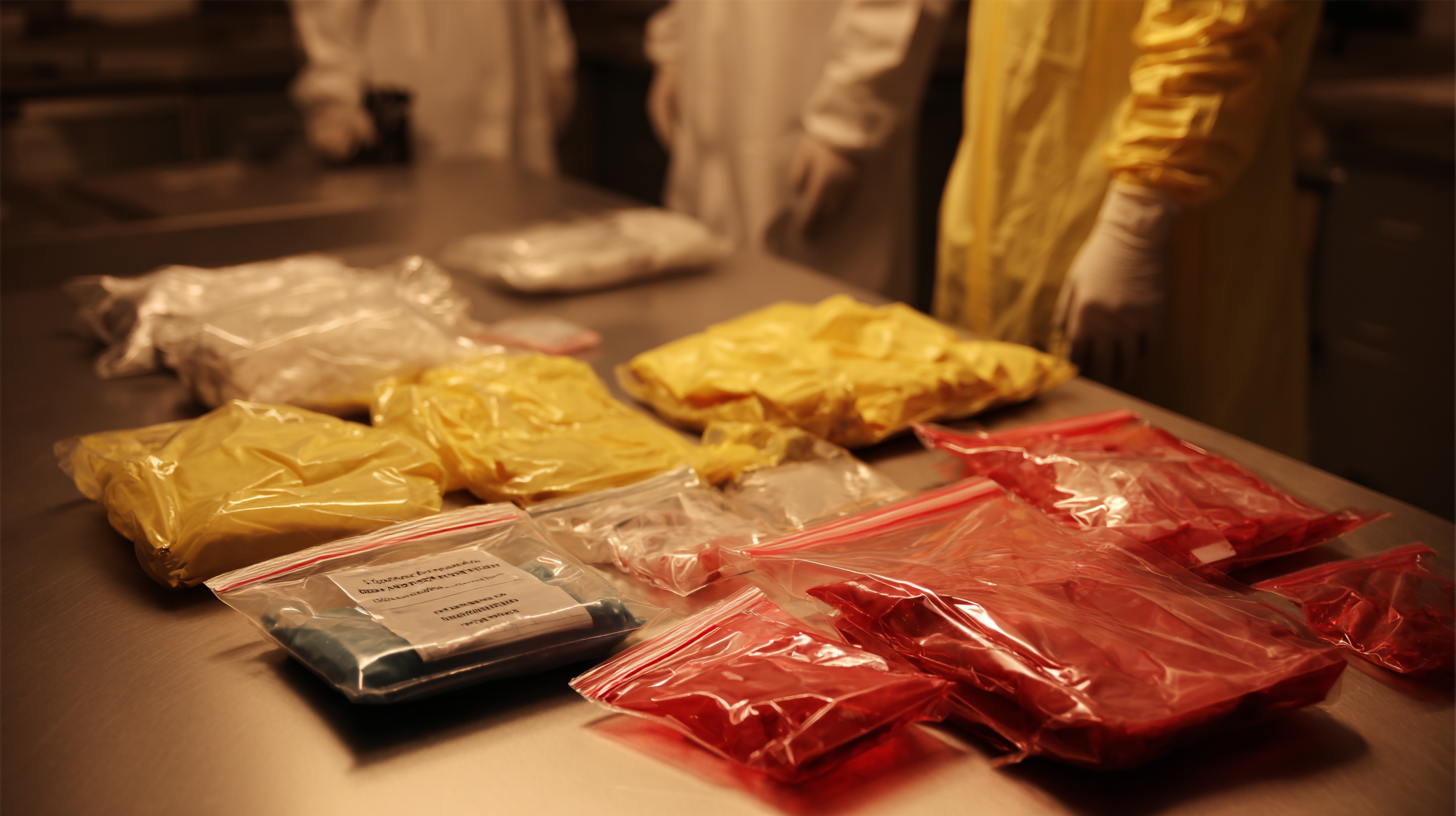
When it comes to laboratory safety and specimen transportation, choosing the right biohazard specimen bags is crucial. There are several types of biohazard specimen bags, each designed for specific uses. For instance, dual-zipper bags are commonly used for transporting samples that need to be kept separate from the outer environment. According to the International Society for Biological and Environmental Repositories, using properly constructed biohazard bags can reduce the risk of contamination by up to 80%, highlighting their importance in specimen handling.
Another essential type is the leak-proof specimen bag, which is vital for liquid samples. The Centers for Disease Control and Prevention (CDC) reports that nearly 27% of laboratory-acquired infections can be linked to inadequate specimen packaging. These leak-proof bags come with strong seals and are often made from puncture-resistant materials, ensuring samples remain contained during transit. High-density polyethylene (HDPE) is a popular choice, as it offers durability while complying with industry standards for biohazard waste containment.
When selecting biohazard specimen bags for laboratory use, regulatory standards and compliance are paramount considerations. These bags must adhere to guidelines set forth by agencies such as the CDC and OSHA, which outline specific requirements to ensure safe handling and transportation of hazardous materials. A clear understanding of these regulations will help laboratories maintain compliance and safeguard both personnel and the environment.
Moreover, the material and design of the specimen bags are crucial in meeting these standards. For instance, bags must be puncture-resistant, leak-proof, and made from materials that can effectively contain biohazardous substances. Laboratories should verify that the bags are clearly labeled, using appropriate biohazard symbols to warn staff of potential risks. Staying informed about the latest updates in regulatory frameworks will ensure laboratories choose the right products that meet both safety and compliance needs, thereby reducing the likelihood of accidents or contamination.
This chart illustrates the importance of various factors when choosing biohazard specimen bags for laboratory use. Each factor is rated on a scale of 1 to 10 based on its significance in ensuring compliance and safety in handling potentially hazardous biological materials.
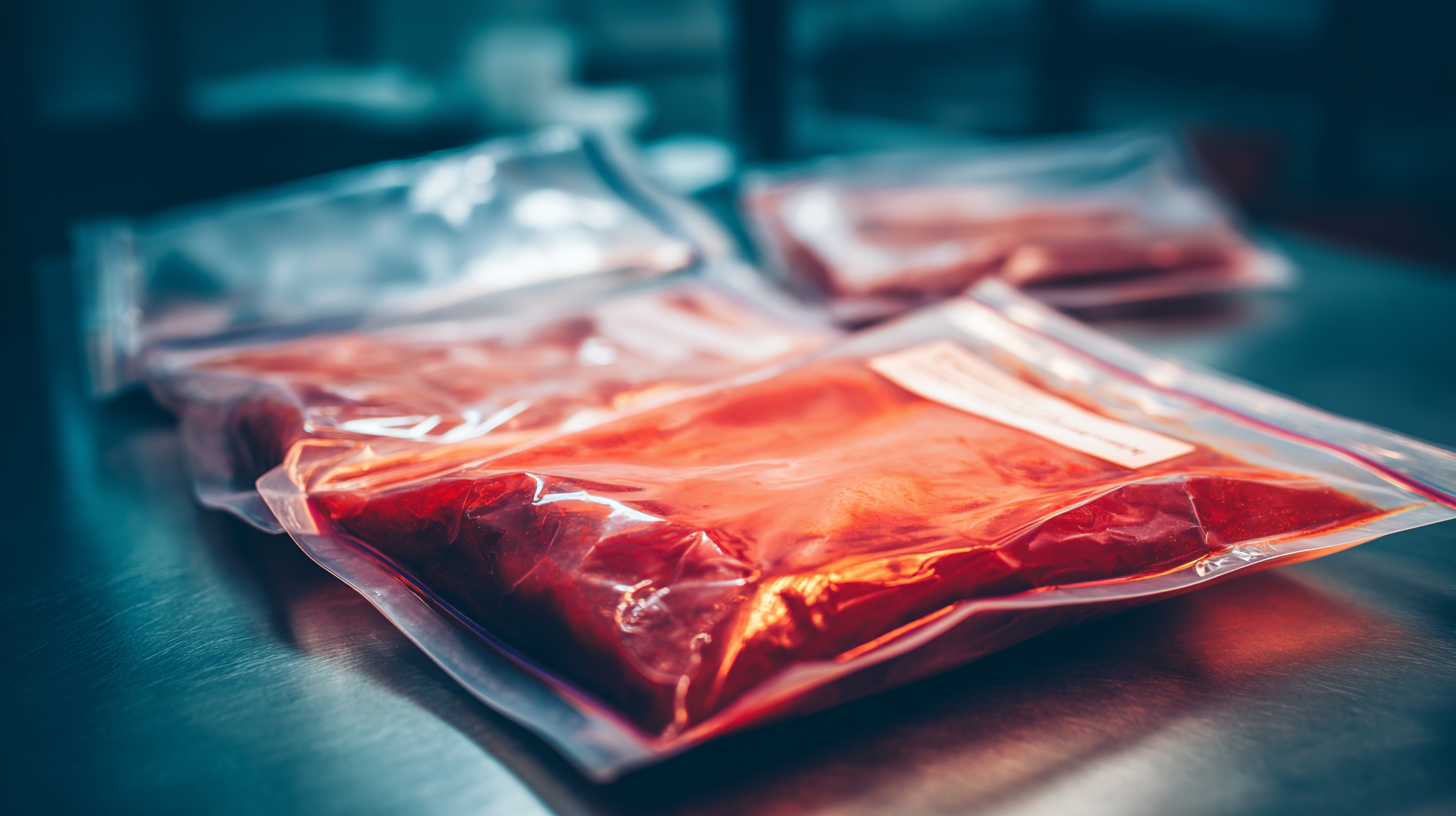 When it comes to handling and storing biohazard specimen bags in the laboratory, adopting best practices is crucial for ensuring safety and compliance. According to the Centers for Disease Control and Prevention (CDC), improper storage of biological specimens can lead to contamination and pose significant risks to laboratory personnel. Therefore, it is essential to maintain a controlled environment, ideally between 2°C to 8°C, to preserve the integrity of the samples. Furthermore, using biohazard specimen bags that are puncture-resistant and adequately sealed can minimize contamination risks and prevent leaks.
When it comes to handling and storing biohazard specimen bags in the laboratory, adopting best practices is crucial for ensuring safety and compliance. According to the Centers for Disease Control and Prevention (CDC), improper storage of biological specimens can lead to contamination and pose significant risks to laboratory personnel. Therefore, it is essential to maintain a controlled environment, ideally between 2°C to 8°C, to preserve the integrity of the samples. Furthermore, using biohazard specimen bags that are puncture-resistant and adequately sealed can minimize contamination risks and prevent leaks.
Moreover, labeling specimens clearly is not only a regulatory requirement but also a best practice that enhances identification and tracking. The World Health Organization (WHO) suggests that clear labeling should include the sample type, date of collection, and the hazard associated with the specimen. Additionally, training laboratory staff on proper handling techniques, such as using gloves and personal protective equipment (PPE), is crucial. Research indicates that effective training programs can reduce incidents by up to 40%, emphasizing the need for an informed and cautious approach to biohazard specimen management in the lab.
